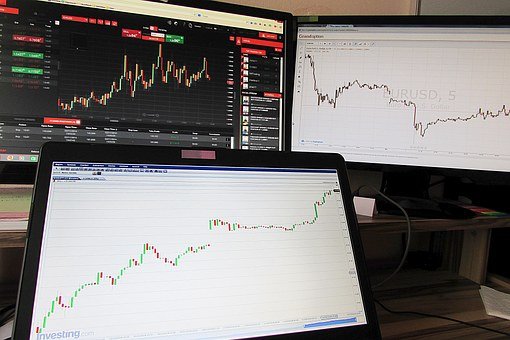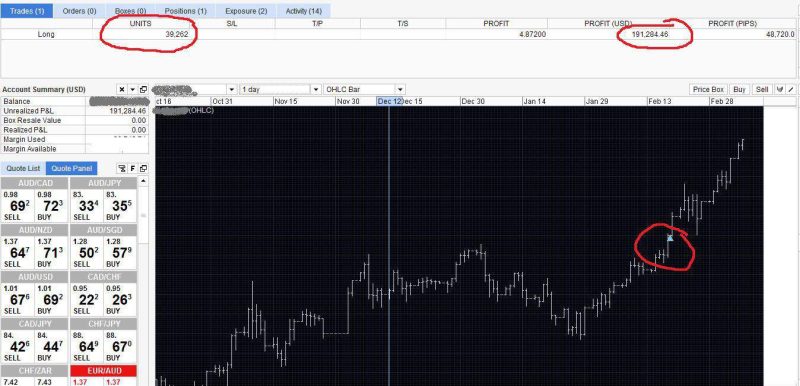If a company would like to raise funds to expand their services, they have several options. Making the company public is one of the most effective options for raising capital within a short timeframe. When a company becomes public, they sell shares through the stock market. The popular term for this process is the Initial Public Offering. The shares available on the exchange market represent an ownership portion of the company.
Contents
- What is a Stock Float?
- How to Calculate the Stock Float
- The Importance of Float Stock
- How the Float Affects the Stock Behavior
- Important Points to Consider
- Frequently Asked Questions
What is a Stock Float?
A stock float refers to the number of shares that a company offers to the public. Whenever a company becomes public, its insiders like the CEO, president, and board hold on to the crucial claim to control the company. The brokerage helping the company go public will also take most of the shares as part of the payment. In any case, the stock float represents the remaining shares available for the public.

Most traders overlook the stock float, although it provides excellent information on trading the stock and setting up a portfolio with the company. Low floating stocks represent stock market assets with minimal shares. You can calculate the floating stock by subtracting restricted stock and closely-held shares from the total outstanding claims from the company.
A stock with a large float is less valuable than a stock with a smaller float. The explanation for this statement is that fewer shares mean that it is somewhat difficult to find a seller or buyer. The results are often a lower volume and larger spreads. Nevertheless, a company can have more share outstanding but features a limited stock.

For instance, consider a company with 50 million shares. In such a case, ESOP (Employee Stock Ownership Plan) can take up to two million shares, insiders and management can take up to five million shares, and large institutions can take up to 35 million shares. Thus, the floating stock would be about eight million shares or 16% of the outstanding shares.
In any case, the stock float can fall or rise over time. The fluctuations can result from several reasons. For instance, the company can sell its additional shares to generate more capital, which perks up the float. If a company restricts its claims, it makes them more valuable to increase the floating stock.
How to Calculate the Stock Float
You can calculate the stock float by subtracting the outstanding shares from the restricted shares. If the company has significant shares worth ten million, and the insiders hold about three million, the floating stock will be about seven million. Most companies offer details about their float, and you can access more information on most financial websites. For instance, Yahoo provides its Finance details to help traders quote the stock float.
The Importance of Float Stock
The float stock is crucial for several investors since it showcases the number of shares available for trading by the investing public. A low float translates to a sluggish trading market. Hence, limited trading activity makes it complicated for the traders to exit or enter positions in the stock market.

Expert investors avoid trading with firms with a smaller float since the company offers fewer shares to trade. Therefore, it can result in wider bid-ask spreads and limited liquidity. For that reason, investors like insurance companies, pension funds, and mutual funds buy large stock blocks from large float companies.
It would be best to note that a company is not responsible for the losses or profits from trading its shares. Instead, the secondary market is accountable for this task. In other words, shares that get shorted, sold, or purchased by traders do not affect the floating stock since it does not determine available shares to trade. They indicate the redistribution of the available shares. Also, the trading and creation of options in the stock market do not impact the float.
How the Float Affects the Stock Behavior
Stock feature personalities like people. An investor can better predict the stock’s future behavior if they understand its character better. Yet, the float determines many features of the stock market fluctuations. The most common characteristic would be volatility. The stock and float volatility comes with an inverse relation. The stock will experience wilder price swings and higher volatility when there is a low float.

Although the price swings can be profitable and fun when they favor you, a hefty price and low float move can increase loss chances due to slippage on the stops. Although there is no specific explanation for a low float, stocks that feature less than 20 million shares are generally low floats. For instance, the float below clearly shows charting with a common float stock. DIT (AMCON Distributing Company) showcases a 194,000 shares float.
If you check on the chart, you will realize that the $2 per day range appears somewhat attractive. However, it features significant price gaps due to the low volume and low float. It is more likely to attain worse prices on the stop loss since prices may gap far beyond your intended stop price. Although high volatility may create a higher risk, it can also provide an excellent opportunity for traders to generate profit.
Companies that feature a lower float come with a pronounced reaction to the company’s news with a higher float. Suppose you expect a negative or positive announcement on a company's low float and enter a position before the report. In that case, you can take in the opportunity of a more significant price moving in your favor. This statement explains that the prices on the low float stocks can fluctuate to an even lower volume.

Nevertheless, some investors can get excellent results from investing and trading in low float companies. Most traders prefer the higher predictability of larger float companies. It would be best to note that online trading depends on identifying and trading where the order flow will result in price fluctuations.
Potential traders can gauge business shares' interest by examining the firm’s stock float. If a more significant fraction of the stock is available on the stock market, it implies that most investors are looking to buy shares from the company. If a smaller fraction of the outstanding shares is floating, fewer investors will look to buy its stocks.
All in all, investors can still attain liquidity insights into the company’s security through the floating stock. When fewer shares are available, it implies less liquidity for traders interested in buying these shares. This state can result in several challenges for interested investors. It can result in higher spreads, reduced opportunities for shorting, and higher volatility.

It would be best for all traders to understand that if the company features a lower float stock, it can boost the float by giving out several new stock units. Issuing the shares can decrease existing shares’ value through stock dilution.
Most importantly, investors must conduct extensive research before investing in any stocks. Considering the information that the company provides may result in wrong decisions since they provide surface-level analysis alone.
Important Points to Consider
RVOL (Relative Volume) refers to comparing current trading volume that measures up against the trading volume in the previous period. This is a crucial indicator since it can affect its liquidity and explain whether investors can profit from investing in a particular company. On the other hand, reactions to news impact the price and volume of a stock through information related to the company's issues.
It depends on how long it lasts and the change type that it caused. It also bases on how often such news influenced the stock market. The answers to these questions will provide a clear preview of the stock market's past performance, and it can inform the traders’ opinions regarding what can happen in upcoming transactions.

Finally, the float percentage describes the total number of shares available for stock trading in the percentage form. It would be best to ask yourself several questions when considering the float percentage. Some of the questions include checking on the float size and the duration in that size. How other companies instated a repurchase for that stock and if it ever gets split before the purchase.
Above all, check on the float’s history and identify the reasons for the low price. This will provide an insight into whether it is good to avoid the stock or purchase it. The key to record success in the stock exchange market is to conduct research and ensure that you invest in confident positions that will reap positive results. Besides, research will help you understand the market better. Hence, you will get better results from all your trades and record more profits.
Frequently Asked Questions
1. What does stock float tell you?
You can calculate the floating by subtracting any restricted stock from the company’s outstanding shares. It represents the number of shares available for trading by the investors from the public. A stock float refers to the number of shares that a company offers to the public. Whenever a company becomes public, its insiders like the CEO, president, and board hold on to the crucial claim to control the company. The float stock is vital for several investors since it showcases the number of shares available for trading by the investing public. A low float translates to a sluggish trading market.
2. What is a good stock float?
Most stock traders prefer a company with a ten to 20 million stock float to fall under the low category. For instance, the Bank of America had about 9 billion worth of float stock. Nevertheless, the banks still float below one million. It would be best to conduct extensive research before you take a position in the stock market. Several institutions venture into stock tricks and tips. Thus, you might land on a service provider offering misleading information.
3. How does float affect a stock?
The stock float affects the price of the firm’s shares daily. It determines the demand and supply of the claims. Without a steady shares supply, it might become difficult for the traders and investors to decide the trading value. The stock float will enable the company to raise capital for activities that can promote its value. If a more significant fraction of the stock is available on the stock market, it implies that most investors are looking to buy shares from the company. If a smaller fraction of the outstanding shares is floating, fewer investors will look to buy its stocks.

















